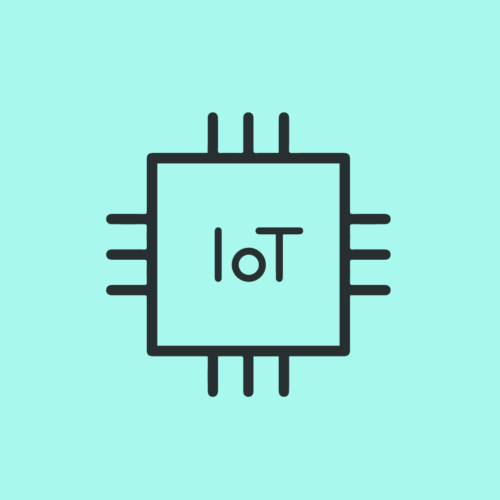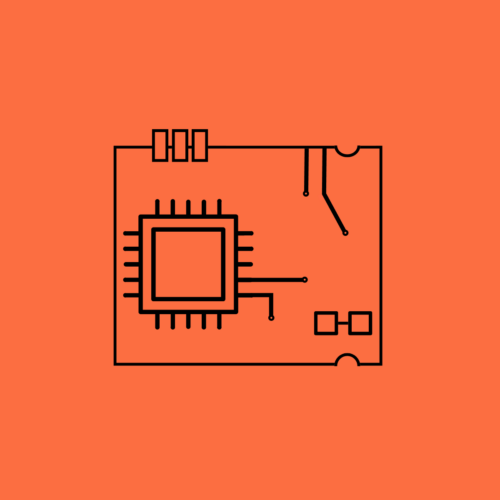BLOG
Enhancing IoT Security with Companion Security Chips
IoT is transforming our world, connecting everyday devices to the Internet, but this connectivity comes with significant security risks.
Companion security chips, such as the ATECC608B from Microchip, play a crucial role in addressing these challenges, especially for devices powered by lower-end microcontrollers (MCUs).
In this article, we’ll explore how these chips secure IoT devices and why they might be chosen over other solutions.
The Role of Companion Security Chips in IoT
Offloading Encryption and Key Management
Companion security chips are specialized hardware designed to work alongside MCUs, handling tasks like storing and verifying certificates and keys. They come equipped with built-in accelerators for AES encryption, as well as support for offloading asymmetric crypto operations such as ECDSA and ECDH. This support is crucial for securely adding and managing IoT devices on the company’s PKI. By offloading these tasks to hardware, the chips can execute them much faster and more efficiently than MCUs executing the same operations in software. This offloading not only speeds up encryption tasks but also significantly reduces the flash and RAM usage on the primary MCU, making it a vital feature for resource-constrained devices.
Built-in Security Features
These chips provide robust security capabilities out of the box, including secure boot, secure firmware updates, and device authentication. By storing cryptographic keys in a tamper-resistant environment, they ensure that sensitive information remains secure, even in the event of physical attacks on the device.
Why Choose the ATECC608B?
Market Leadership and Reliability
The ECC608B family, as the first of its kind on the market and the most widely used, sets a high standard for companion security chips. Its reliability and performance have been proven across a wide range of applications, making it a go-to choice for IoT developers looking to secure their devices.
Cost and Power Efficiency
For projects utilizing low-end MCUs, adding a companion chip like the ECC608B can be a cost-effective and power-efficient way to enhance device security. This is particularly relevant for applications where budget and energy consumption are critical constraints.
Unique Device Identity
Another significant advantage is the ability of these chips to support individualized serialized boards/devices. They come with pre-programmed unique IDs, facilitating secure and unique identification for each device in the field.
Integration with AWS IoT
Additionally, the ECC608B offers out-of-the-box integrations with AWS IoT, streamlining the provisioning and deployment process and ensuring seamless connectivity with cloud services. This integration further enhances the ease of use and versatility of the chip for IoT developers.

Situations Where Companion Security Chips May Not Be Needed
Larger MCUs/MPUs with Built-in Security
In designs that utilize larger MCUs or microprocessors (MPUs) with integrated hardware security features, such as ARM’s TrustZone, the additional security provided by companion chips may not be necessary. These integrated solutions can offer comparable security functionalities within the main processor unit.
Alternative Security Implementations
Developers comfortable with implementing AES/TLS and key storage in regular memory, and who are using MCUs with sufficient onboard security and processing capabilities, may opt not to use an external security chip. However, this approach often requires more development effort and may not provide the same level of security as a dedicated hardware solution. It’s worth noting that to securely store keys on MCUs, there needs to be true “secure storage” support, such as utilizing ARM TrustZone or a Memory Protection Unit, to avoid potential security vulnerabilities.
Final Thoughts
Companion security chips like the ATECC608B offer a powerful, efficient, and cost-effective way to enhance the security of IoT devices, especially those powered by lower-end MCUs. By providing dedicated hardware for secure key storage, encryption, and device authentication, they address critical security challenges in the IoT landscape. For most IoT applications, they are an essential component of a secure and reliable device architecture.
Choosing the right security solution requires a careful assessment of the device’s requirements, the capabilities of the MCU/MPU in use, and the specific security needs of the application. As the IoT continues to evolve, the role of hardware-based security solutions like the ATECC608B will undoubtedly remain a key factor in the development of secure, trustworthy IoT devices.









